Health Anxiety in the 1960s as a Motif in Rosemary’s Baby and Night of the Living Dead
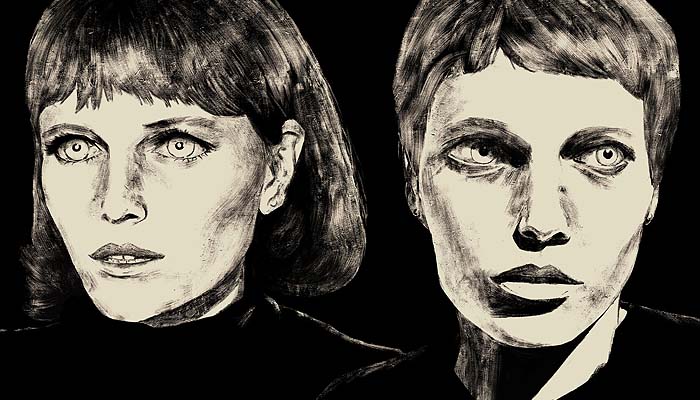
The desire to be healthy is a part of human nature. It could be a conscious desire, as exemplified by people who follow rigid diets and fitness plans to be their healthiest selves. Or it could be an unconscious desire, such as worrying about possible infection when one gets a cut, scrape, or other minor injuries. It is normal for most people to experience some anxiety about their health every now and then. However, this differs from illness anxiety, also known as hypochondria, which is a mental illness characterized by debilitating fears about oneself having a serious illness despite exhibiting little to no symptoms. 1 During the COVID-19 pandemic, it has become more common to feel and talk about health anxiety openly. Even people who are not hypochondriacs or do not have anxiety disorders are likely to have also felt health anxiety about the coronavirus due to its high rates of transmissibility and fatality rates.
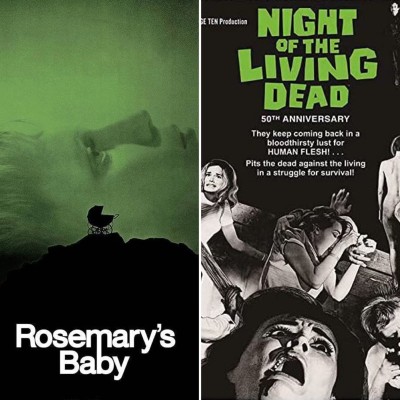
Many films are explicitly about diseases, viruses, and/or health anxiety. These include World War Z (2013), The Happening (2008), Bird Box (2018), and so on. However, some films explore diseases, viruses, and/or health anxiety implicitly, by using allegory. These include the fear of syphilis in Nosferatu (1922), the fear of parasites in Alien (1979), and the fear of dementia in Relic (2020). This article explores the motif of health anxiety in the 1960s as seen in two films from the decade: Rosemary’s Baby (1968) directed by Roman Polanski and Night of the Living Dead (1968) directed by George A. Romero. The former explores health anxiety about women’s health and pregnancy and the latter explores health anxiety about exposure to nuclear toxins.
Women’s Rights
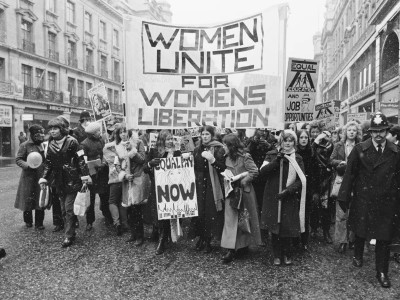
Polanski’s film was released during the women’s liberation movement. This movement included much discussion about women’s health and reproductive rights. At this time, marital rape was still legal, abortion was legal only in extenuating circumstances but even then, was highly stigmatized, and birth control pills had only just begun being sold explicitly as a contraceptive. While changes in favour of women’s bodily autonomy were finally underway, they were only in the beginning stages of development. This means that many women were still subject to the men in their lives making health decisions for them.
Rosemary’s Baby shows how “even for a woman who welcomes pregnancy, as Rosemary does, the experience may produce anxiety, fear, and ambivalence towards her own body, particularly if she is worried about the outcome of her pregnancy due to ill health”. 2 Her husband, Guy, makes all decisions about her impregnation without her knowledge. He conspires with the Castevets without her knowledge, agrees to have her drugged and raped, and offers her up to be the mother of Satan’s child. He also gaslights her throughout the film whenever she brings up her suspicions about the Castevets and the odd things she has been experiencing during her pregnancy. Additionally, her obstetrician, Dr. Sapirstein, is chosen by the Castevets. He dismisses Rosemary’s health concerns about her pregnancy and refuses to let her take vitamins, typically recommended for pregnant women at the time. Rosemary’s exclusion from decision-making and the dismissal of her concerns only exacerbated her anxieties for the welfare of both herself and the fetus.

During her early pregnancy, before she learns more about witchcraft and the Castevets involvement in it, it seems plausible to the audience that she is feeling normal amounts of stress and anxiety for a first pregnancy. However, when Rosemary insists on throwing a party with her friends, who are not tenants at The Bramford or friends of the Castevets, her anxieties about her health are validated. Unlike the Castevets who are significantly older and unlikely to believe in women’s bodily autonomy (as seen through their involvement in the plot to have Rosemary birth the devil’s child without her consent), Rosemary’s friends are young. When she shares the extreme abdominal pain and weight loss she has experienced during her pregnancy, along with the lack of vitamins, Dr. Sapirstein’s inadequate care, and Minnie’s suspicious daily tinctures, they confirm that this is unusual and uncharacteristic of a typical pregnancy. As women who are around the same age as Rosemary, they are likely to understand how the medical system ignores the valid health concerns of women and the need for women’s rights, including reproductive rights. The anxiety Rosemary feels about the health of the fetus and her health adds to the uneasy feeling that is characteristic of psychological horror films. While health anxiety is not a major theme in Rosemary’s Baby, it is an underlying motif that appears consistently throughout. This is similar to how women’s reproductive rights were not at the forefront of common discourse in the 1960s (as the women’s liberation movement was not accessible to all), but the need for it was felt by women throughout the world.
Influence of Political Culture
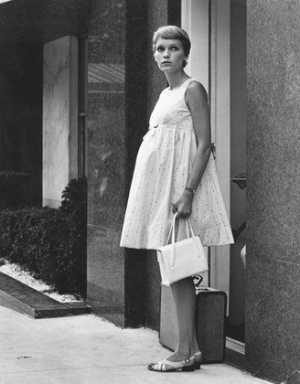
Another film that explores health anxiety implicitly is Night of the Living Dead. This film was conceptualized and released during the Cold War. This period of time was characterized by widespread fear of nuclear war due to the ongoing conflicts between the United States and the Soviet Union. Many events in the 1960s increased fear of nuclear war, including the Cuban Missile Crisis in 1962 and the Space Race from 1957 to 1969. These events, along with the rise of the environmentalism movement, which began as anti-nuclear protests, explored the effects of manmade chemicals and toxins, such as pesticides, and their effects on the health of the general public. The Cold War also instilled a fear of foreign interference and its potential consequences for the general public. Sartin explores the role of people, science, and technology in the formation of the infectious horror genre in literature and films saying:
“The horrors of two world wars followed by the first nuclear cataclysms have led to a realization that … science and culture could contribute to mankind’s decay. This is the critical point that horror, and especially infectious horror in the post-World War II period, address. Men and women of science, in their hubris, have created the conditions for monstrous outbreaks…” 3
This fear of government toxins and chemicals contributed to the creation of the zombie as a creature of horror. Romero’s classic film cites the undead, cannibalistic condition as an effect of radiation from a space probe. The government’s involvement in nuclear power was a grave concern for the general public at that time. This fear about how nuclear toxins and waste could impact human health culturally transfers onto the screen. At that time in history, the only consequences of radiation from nuclear power had been observed in the health of people in Japan who had been exposed to the atomic bombs in Hiroshima and Nagasaki during World War II twenty years earlier.

In Romero’s film, the creatures are never referred to as zombies, but as ghouls. These creatures were people that others knew and loved, such as Johnny who was Barbra’s brother and Karen who was the Cooper’s daughter. However, the condition takes away their status as humans. Being referred to as ghouls makes them inhuman, stripping them of their humanity. It alienates them and makes them appear to be something to be dreaded given that they are so obviously different and unknowable. To keep themselves safe, Ben and the others must isolate themselves in the house indefinitely until help arrives. This can be understood contemporarily through the COVID-19 pandemic which encouraged people to stay home and minimize contact with others to prevent contracting the virus. The virus cannot be contained or controlled so people must contain and control themselves to avoid contraction. This is precisely what the humans in Night of the Living Dead experience but unprecedented illness and disease are represented by undead ghouls. Additionally, the illness supposedly caused by radiation from the space probe shows how the Space Race contributed to public anxiety about foreign influence on such a large scale. The illness itself was of alien (i.e., foreign) origin, which is also how the COVID-19 virus, which was initially found in Wuhan, China, was first perceived by Western society.
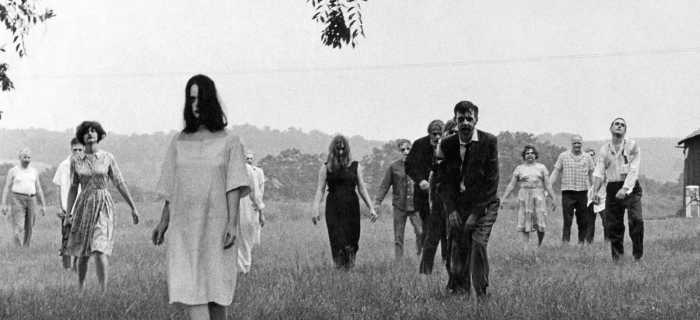
Health anxiety is something that is still felt today. It is a human trait that stems from the desire to be healthy to survive. This article explored how the health anxiety of the 1960s was present in two significantly successful and culturally impactful films from that decade. While women’s health anxiety in Western society might look a bit different from the 1960s, it is still prevalent, especially in minority groups who continue to experience discrepancies in healthcare as opposed to men (particularly white men). The scrutinization and politicization of women’s reproductive rights and abortions, along with attributing concerns to anxiety still occur, but are done more subtly as microaggressions. The origin of zombie creatures lies in fear of government-made toxins and chemicals. It is a fear that continues to pervade society as science and technology continue advancing and the threat of biological warfare has never been greater. The prevalence of this fear is seen in the ongoing popularity of zombie narratives. For instance, zombie films are now their own subgenre of horror and have developed their own mythology and lore. They have also spawned several successful zombie franchises such as The Walking Dead (2010-2022) and Zombieland (2009, 2019).
Works Cited
- Warwick, Hilary M. C., and Paul M. Salkovskis. “Hypochondriasis.” Behaviour Research and Therapy, vol. 28, no. 2, Jan. 1990, pp. 105–117, doi:10.1016/0005-7967(90)90023-C. ↩
- Valerius, Karyn. “‘Rosemary’s Baby’, Gothic Pregnancy, and Fetal Subjects.” College Literature, vol. 32, no. 3, Johns Hopkins University Press, 2005, pp. 116–35, http://www.jstor.org/stable/25115290. ↩
- Sartin, Jeffrey S. “Contagious Horror: Infectious Themes in Fiction and Film.” Clinical medicine & research vol. 17,1-2 (2019): 41-46. doi:10.3121/cmr.2019.1432 ↩
What do you think? Leave a comment.











The scenes in the movie where Rosemary is interacting with women her own age are some of my favorite moments in the film because they’re the few times in the movie that Rosemary was listened to, as you said, and could be herself without judgment. The scene where she met Terry in the laundry room and the scene where she discusses her pregnancy pains with her friends (there’s also supposedly a deleted scene where Rosemary and a friend go to the movies together, but that scene was cut due to time constraints) are very sweet, but they become sad when you know that Rosemary will eventually lose these people from her life. This entire movie is just so incredibly sad! 😭
Whatever you say, you can’t disagree that Polanski is a genius.
His involvement was significant. Screenplay and direction.
The movie was well written and well directed but that doesn’t negate the fact that he’s a criminal and therefore doesn’t deserve to be celebrated or praised.
Back in the 60s, when the films of horror was basically monsters and vampires, Polanski broke all codes with this story about dark atmospheres and devil presence. The horror genre began its change.
Crazy how fast and different zombies have gotten.
Yeah. Zombieland is one of my favorite zombie flicks ever but those zombies just play for jokes.
Recently watched this zombie film. Given the sequence of events that have occurred in 2020, what stuck out to me was the level of paranoia that’s instilled in the characters of the film and how relevant it is now.
I would love to hear your thoughts on Dawn of the Dead and Day of the Dead.
Good article, a lot of this went over my head when I watched these films the first time.
I met the actor who played Johnny at Walker Stalker a few years ago, dude didn’t have a line at all, walked up and he chatted for almost 20 minutes, got a couple of autographs, he just seemed like a genuinely nice old dude.
“Rosemary’s Baby” stands the test of time because it was an exquisitely written little novel and the film version was brilliantly made.
I remember being freaked out from the moment that I realized Rosemary was being taken advantage of when she was being raped. Because while I was unsure of if it really was the devil or her husband, both were despicable and the way the pregnancy went and how everyone just overlooked her concerns was terrifying. Being ignored when the genuinely concerning happens is a huge reality for women across the board. The movie follows the book very well and I just finished the book. Though, the endings are a bit different, I may be wrong because it’s been a minute since I saw the movie, but Rosemary is very insistent on the name of the child upon seeing him.
The tone of Rosemary’s thoughts did feel like she was trying to make the most of the awful hand she was dealt, even trying to convince herself she can make this child better than the cult would want him to be. It is a rather bleak ending and is filled with false hope, but it feels like a more satisfying ending than the movie gave. So if you haven’t read the book, I would seriously recommend it!
I love the Romero/Savini remake. I actually like it more than the original. It might be due to me seeing the remake first, but Tony Todd was awesome portraying Ben.
Multifaceted and brilliant movies. And a degree of viciousness that offers a solid punch in the mouth.
I’ll say this as a horror nut…even if you take out all of the topical 1960s political issues, Night of the Living Dead holds up all these years later. The storytelling, plotting, and realism still make this one of the greatest horror movies of all time. It defined the sub-genre and here we are, over 50 years later, still talking about it.
This is a great take on these films.
Must say that I have never watched Night of the Living Dead but it’s amazing a lot of the time how the really old films hold together in the modern day cinematographic world.
Rosemary’s Baby is a great film to study with a feminist lens.
It’s hard for me to leave a descriptive response as I haven’t yet seen Rosemary’s Baby (from beginning to end at least). But I’m always fascinated by how movies choose to either include or reject a feminist perspective, and so I really will have to give this film a proper watch.
Rosemary is lovely. She is the kind of woman who men would slay dragons to protect. Her childhood was mid-western and God fearing. It is reflected in her innocence and femininity which is what makes the movie work so well. You want to protect her because you intuitively know that what she represents is the essence of life and a worthy civilization. The betrayal is so awful because she is a thing of beauty and grace.
That being said, her own greed and pressure on Guy to take that apartment put them in the orbit of witches. Her desire of a worldly, fashionable life (and a shallow actor husband) caused her to put her own faith to the side so she could enjoy the sophisticated pleasures of NY. She is confronted with her own betrayal when Roman starts criticizing the Pope which makes her very uncomfortable but she has already chosen sides in her soul. She is ripe for the picking – as was Sharon Tate.
Very interesting! “Rosemary’s Baby” is a movie with so much in it that is worthy of discussion.
The film is a perfect depiction of what happened to Earth. Put Earth in the place of Rosemary and you’ve got it. We’re now in the aftermath of the birth of the devil, and the world is going mad, like Rosemary at the end, to “like” what’s happening, accept the insanity and go along with it, mainly because there’s no way out. Sounds crazy or “catholic” now, but just wait for CDBC to arrive and this explanation will make more and more sense. That’s why the film is so terrifying. And Roman Polanski should know.
NOTLD is such a incredibly interesting movie to explore – the story itself, the themes, the production, and then of course it’s impact.
Some of the themes of RB are pretty creepy given what Roman Polanski did in his real life.
Polanski is human garbage and should be in a jail cell.
I saw Rosemary’s Baby for the first time back in December and ever since then, it’s been a huge inspiration in terms of my storytelling. It’s always stuck in my mind as one of the most horrifying and disturbing films I’ve ever seen. That constant feeling of dread that looms over the narrative practically drowned me. I’ve never been too scared of big monsters or men with knives, but something about the psyche always gets to me. How one tiny little thing can set us off, causing our downward spiral. We watch it happen to our protagonist and want so badly to do something about it but feel so helpless. Her fate was already set in stone. The gross inevitably of it all waiting just around the corner. Rosemary’s Baby is a true masterpiece and has already grown into one of my favorite movies ever. But I really can’t bring myself to watch it again.
A disturbingly horror epic made by a disturbingly horrific man.
These fringe-genre movies are many times underestimated for that they can tell. Sometimes they have the more earnest messages.
I love zombies and try to watch everything zombie related! Even cosplayed as a zombie a few time!
Night of the living Dead I can’t stop watching this movie!
Omg I remember buying the 30th anniversary version back in college because it was a few bucks at some store. Oh man it was awful! Lol I cracked up so hard and the ending was sooooo stupid ha ha.
I come across the 30th Anniversary cut in the early 2000’s on one of the movie channels one night. I saw added scenes and thought I was losing my mind. The scenes looked so amateurish and garbage-like. I didn’t know what the hell I was watching. I had been drinking on top of that.
For awhile I thought I dreamt the whole thing.
It’s one of the greatest horror films from the black and white era.
I have several versions of this movie, including the Criterion version.
I had this VHS when I was a kid gr8 memories I played it so much I snapped the film and ended up taping it up with scotch tape
I wonder if I can make a music video to this movie. It’d be cool to use actual footage of zombies to an original metal song.
I love this movie but I always had a big problem.
They were all asking should they go down in the basement or stay on the ground floor, but I would of suggested why not gather all you need and go upstairs where the zombies can’t reach you… all you need to do is throw some furniture in the way of the stairs and there you go, keep a look out of the windows for rescue and your good.
Ira Levin was a genius.
Health anxiety can be a great source of horror. It’s interesting to see the variety of ways you can explore that as a filmmaker. I’m personally rather tired of zombies but I like examining them in this way.
A good article on two movies I always enjoyed. Night of the Living Dead seems so tame now compared to when it first came out.
Rosemary’s Baby storyline centers around lack of rights for woman’s own health and body. The article is direct and to the point about this ssue of woman’s right in 1960’s. Woman’s Rights didn’t come fall strength until 1970’s. In the article, ponits out Other issue Germany Warfare or fear of something we can’t
explain or understand. The Living Dead a classic film brings out fears of what we don’t understand, fear of viruses, death and end of life as we know it. It is no different today then 1960’s. The article short well written comparing past earas with modern days. Much has not changed.
First off, I want to thank you for the topic and article itself. I have cerebral palsy. It’s mild and my support needs are low, but I have suffered from health anxiety brought on by medical trauma. Because of that, I’ve also had frustration and anger leveled at me, as well as accusations of hypochondria and obsession. It’s not easy, especially as a woman, so thank you for even acknowledging that health anxiety does exist, it’s valid, and people who have it aren’t unstable.
Also, I don’t mind saying, I am staunchly and unapologetically pro-life. At the same time, I can see how Rosemary’s Baby is a valuable part of the health conversation no matter one’s stance on the abortion issue. That is, I don’t necessarily think the issue is, “Guy took control and didn’t listen to Rosemary, so they ended up with a literal devil child.” I think the issue is, “Guy acted cruelly and inappropriately, and everyone ended up hurt. Everyone suffered. A life that should have been innocent and protected, wasn’t.” *That* is a conversation you can have outside politics, and I think more people should have. The same is true for Night of the Living Dead, esp. after the pandemic and all the conspiracy theories and accusations that still exist. Bravo, particularly for a Halloween article that made me think and will make others think, too!